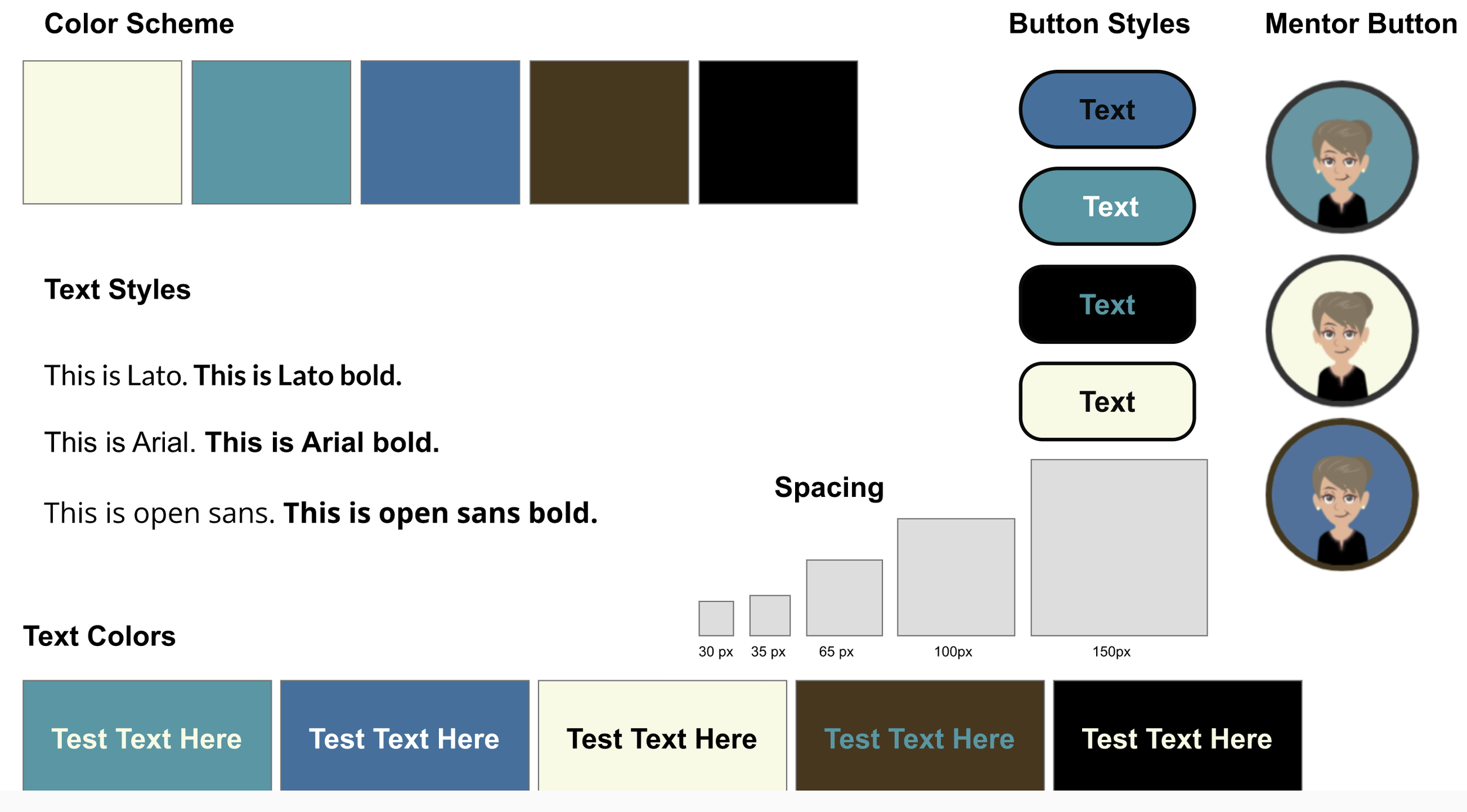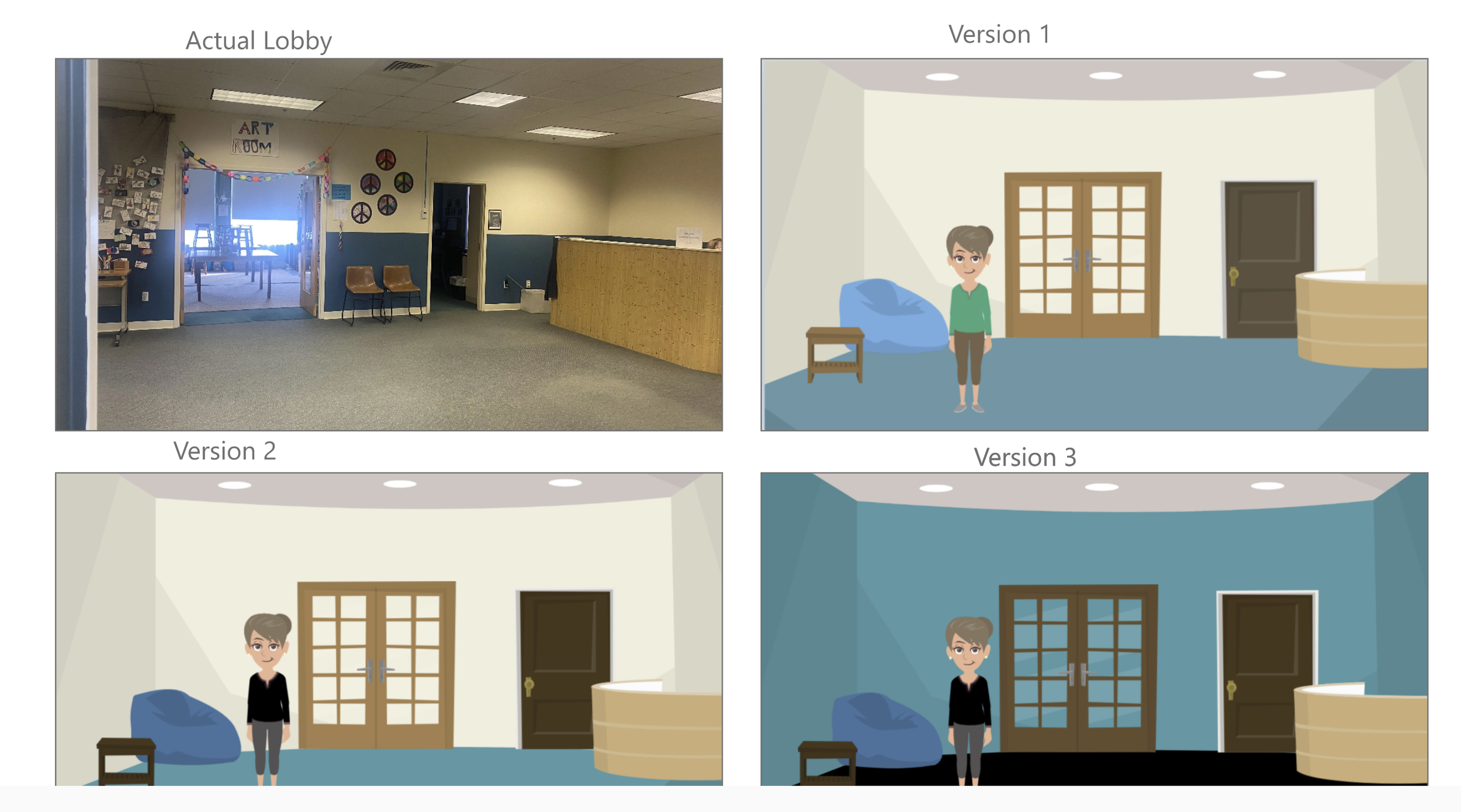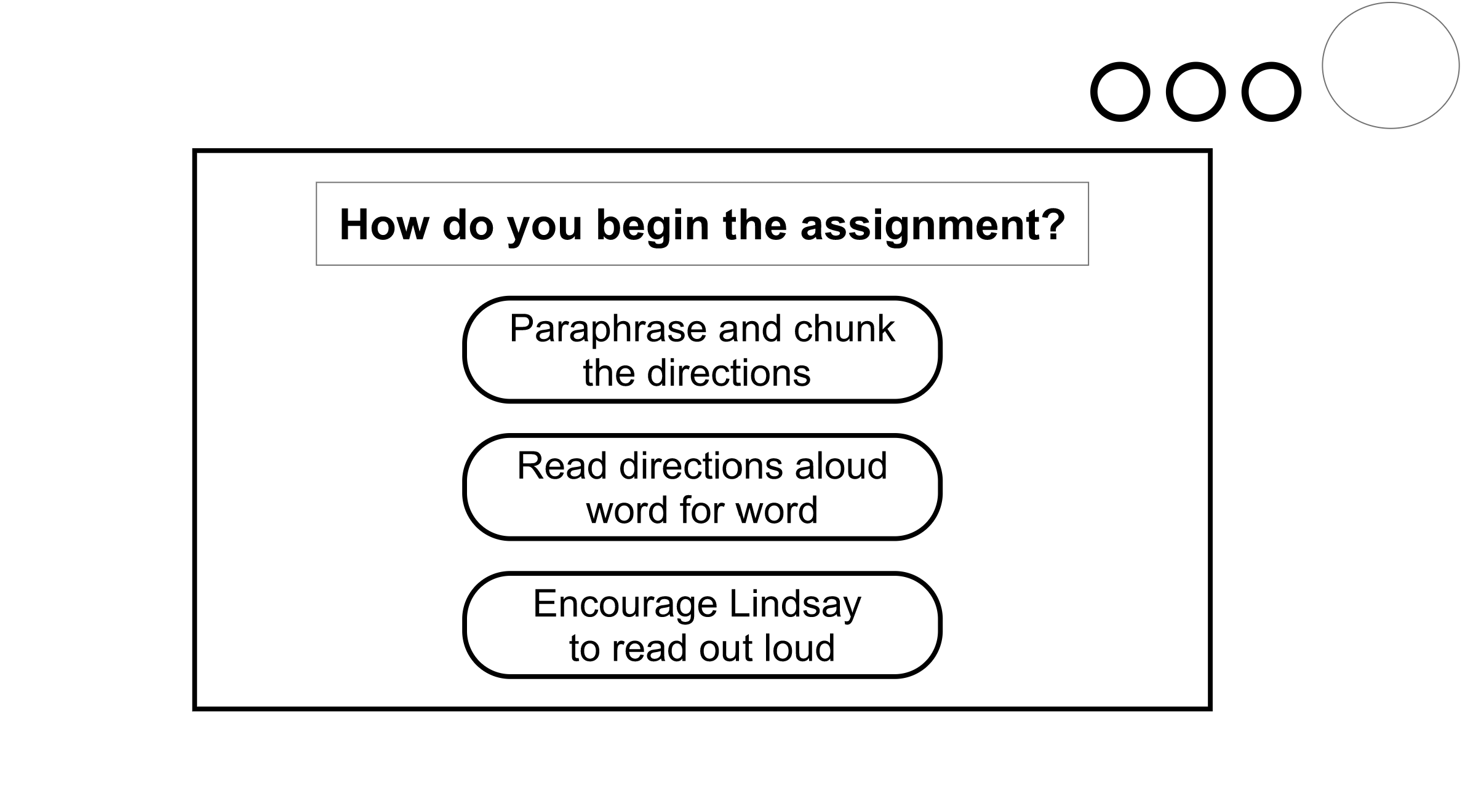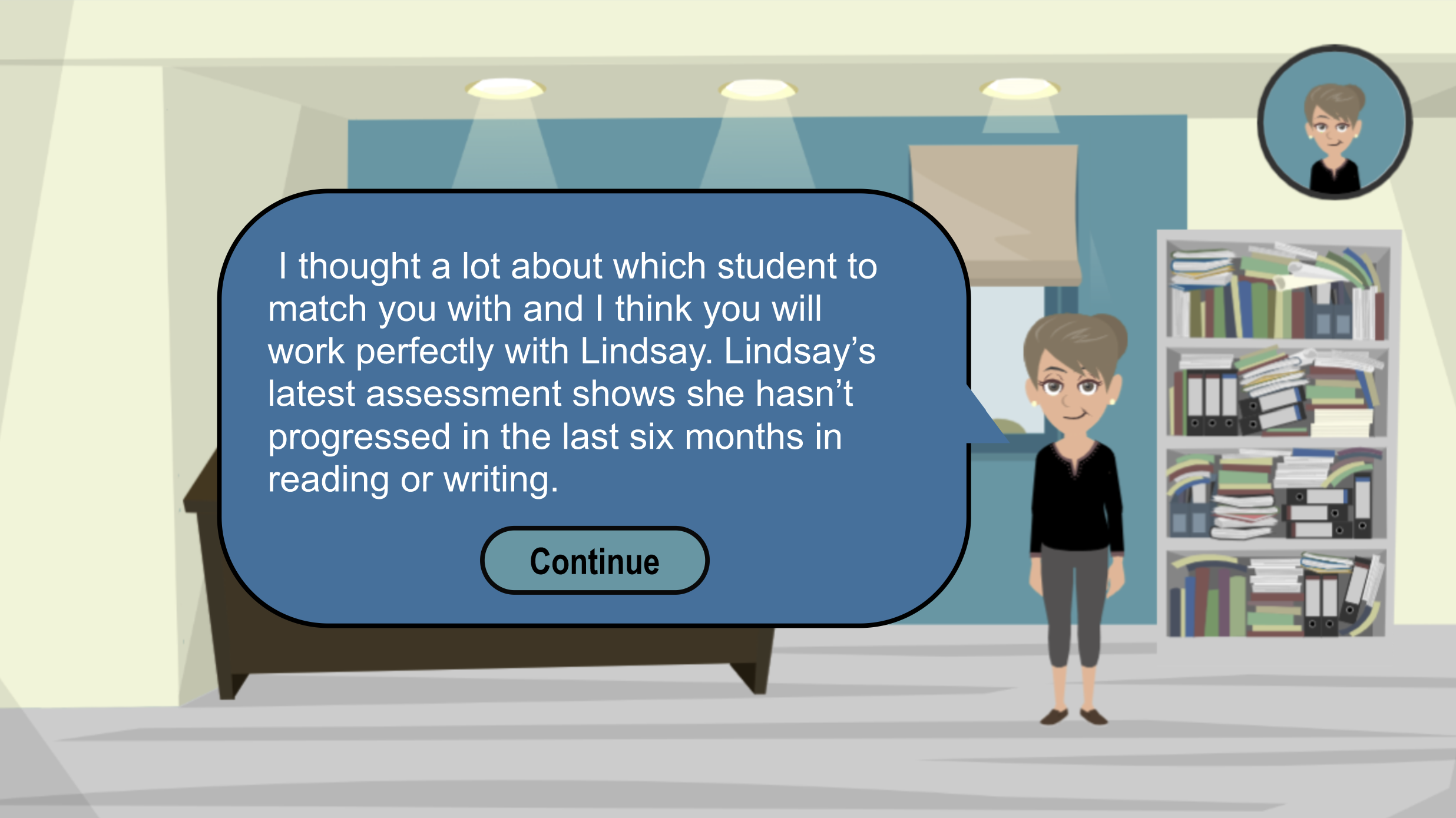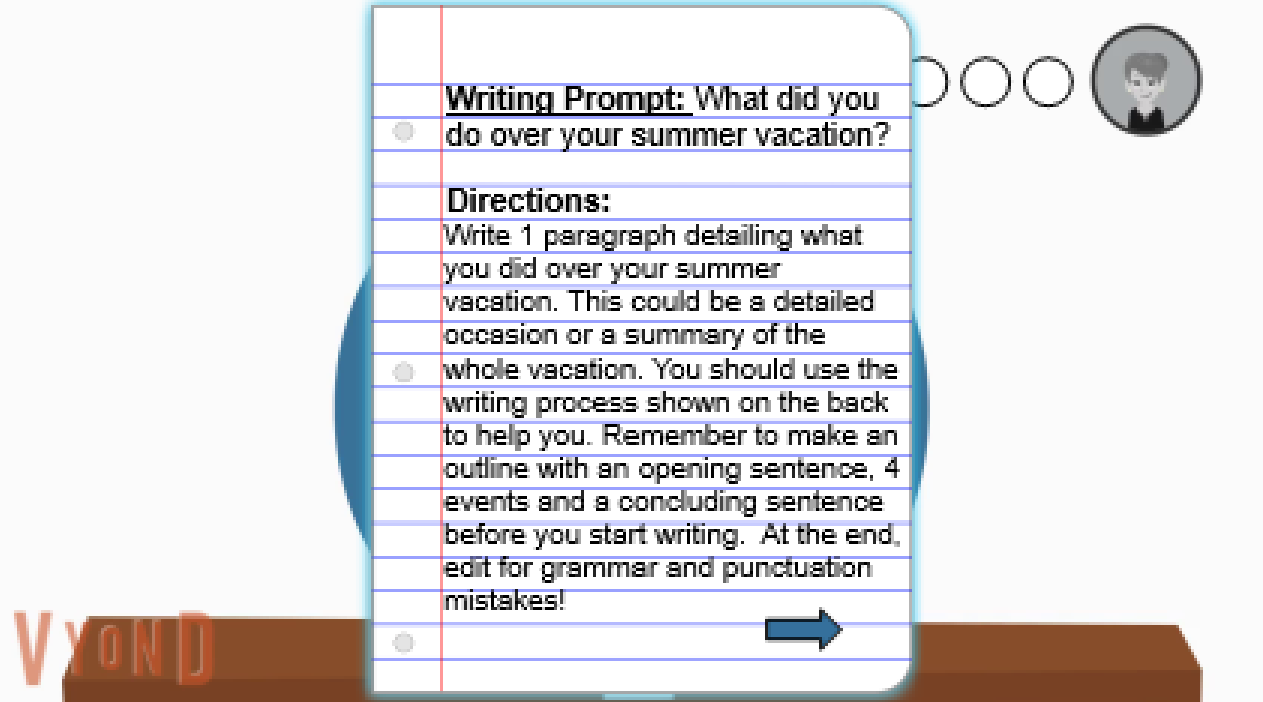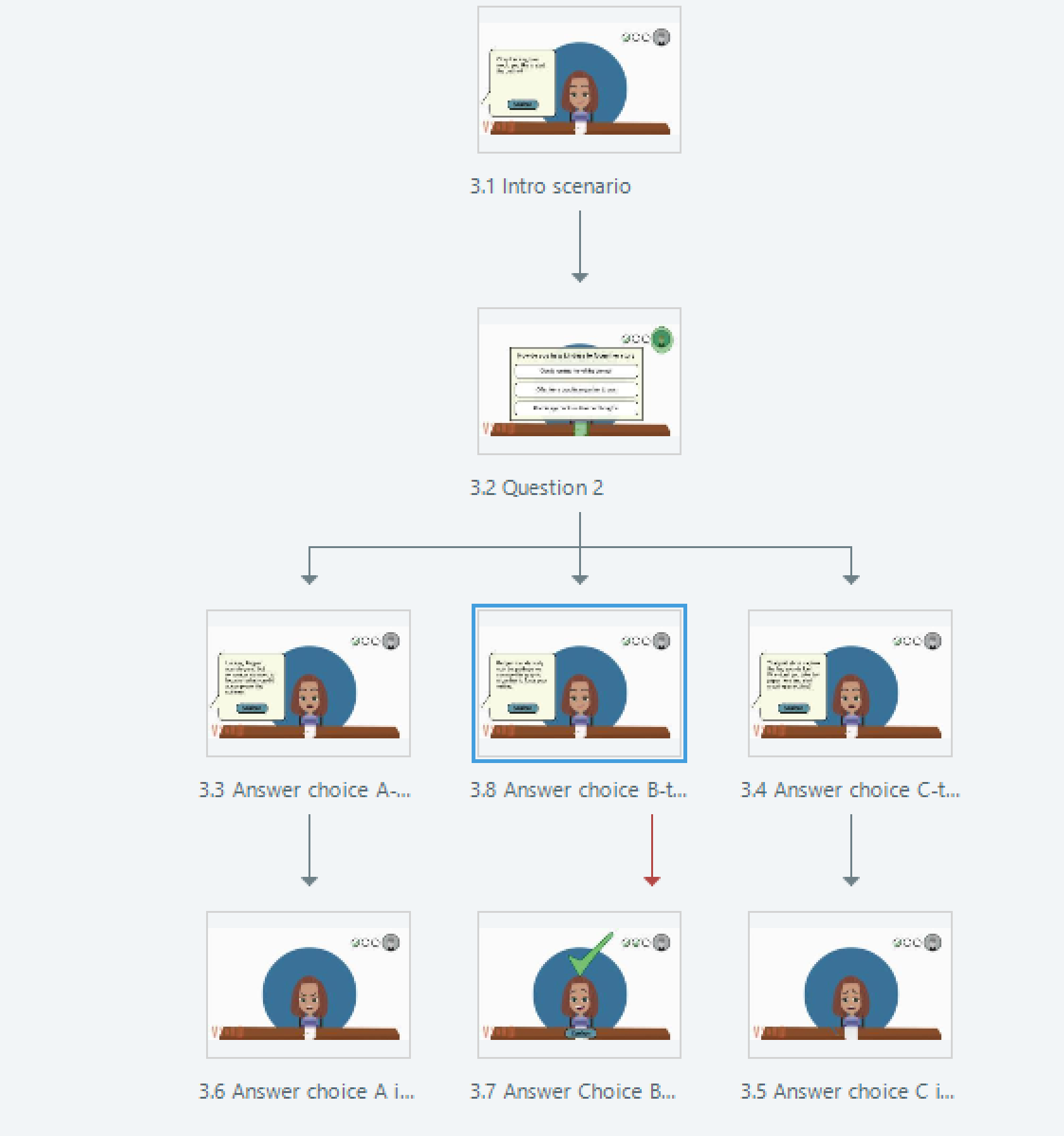Tutoring Students with Dyslexia
The Problem
The client, Aucocisco School and Learning Center, is a special-purpose school that works with students who have dyslexia to help them develop their reading and writing skills. Aucocisco uses the Linda Mood Bell and Writing Revolution programs. New tutors are trained in how to administer the programs. However, the client noticed that students were not improving fast enough and attributed a large part of this to the fact that many tutors had not worked with this particular population and needed strategies to motivate students.
The Solution
After speaking with administration and several tutors, I proposed a scenario-based e-learning module to help onboard new tutors. Scenarios based on real experiences in the tutoring center help the tutor connect the training to daily experiences.
Although in-person training with role-play scenarios could also be effective, new tutors are onboarded at various times of the year, and there is not always the opportunity for sit-down discussions and training. Thus, e-learning was the best option for the client. Additionally, a scenario-based e-learning module fits into the current training program and could open the door for additional e-learning training to supplement.
My Process
To create this project, I used the ADDIE model — Analysis, Design, Development, Implementation, and Evaluation — as a flexible, iterative framework. Each stage of the project included feedback from stakeholders, testing, and revisions.
I analyzed student data and held discussions with teachers, tutors, students, and administration to narrow down the learning objectives with the highest impact.
Design and development included a text-based storyboard, a visual mock-up, and creation of the project.
The team is currently implementing the project and distributing it to employees.
Preliminary evaluation has taken place through feedback from administrators. Tutors who take the training have been asked to fill out a survey to provide feedback and assess the efficacy of the training as it pertains to their role.
Action Map
As a former special education teacher, I used some of my own knowledge as well as insight from colleagues to create the action map. A tutor at the school served as my primary SME throughout the project.
The overall business goal we focused on was increasing reading and writing assessment scores by 5%. Using action mapping, as a team, we brainstormed actions tutors could take to achieve this goal. We narrowed the list down to three high-priority actions tutors could take that would have the highest impact on the institutional goal. These high impact actions served as the focal points of the training.
Storyboard
Using Gagnes' nine events as a framework, I created a storyboard as the blueprint for the project.
-
The text is intentionally chunked to be short, concise, and easily digestible for learners. Additionally, the text is written to model daily speaking language and allows learners to recall prior knowledge of similar contexts they have experienced, as many tutors taking this training have prior experience teaching or tutoring.
-
The text-based storyboard focused on bringing the 3 high-priority actions, identified in the action map, to life in a real-world scenario-based learning experience. The goal is to capture the attention of learners in a way that requires them to immerse themselves in scenarios and environments they would actually experience on the job. The e-learning simulation allows them to imagine actually being in front of a student as they engage in a lesson with the student. The scenario-based e-learning format utilizes Gagnes’ framework by holding the learner's attention, eliciting performance, and maximizing retention through immersing learners in real scenarios they would experience on the job.
-
The mentor character, Kathy, is modeled after a real person who serves as the instructional coach for tutors at Aucocisco School and Learning Center. In terms of Gagnes’ nine events, the role of Kathy the mentor in the e-learning experience provides learners with an introduction to the objectives. She explains the tasks to them in the beginning and serves to provide guidance by asking thought-provoking questions to help the learner answer the questions.
-
Learners receive instant feedback through consequences that follow their answers. The consequences mirror real-life reactions that help the learner to better retain information because they are receiving it in a context that relates to their daily life on the job. Additionally, as they progress through the lesson, they will receive a check mark displayed on the screen, 3 check marks, and checkboxes in total, to assess their progress and performance.
Visual Mock Up
I used Adobe XD to create my visual mock-up. For inspiration, I put together a mood board that helped me compare color combinations and brainstorm ideas for the visuals of the project. Although I had creative freedom, I chose blue and teal green from the school's branding guidelines, as the primary color palette for cohesion.
I also created a style guide to ensure that fonts, colors, buttons, and spacing were consistent throughout the project.
Once I had an idea of colors, I began building wireframes to nail down the spacing of text and objects. Then, I filled in the wireframes with characters and scenery from Vyond. My goal was to try to emulate the look of the actual Aucocisco Building. For each type of slide (title, prompt, question, consequence, conclusion). I did several iterations until I found a visually appealing layout that also made it easy for the learner to navigate.
Interactive Prototype
To build the interactive prototype for this module, I used Articulate Storyline 360. The prototype included interactive slides from the title, introductions first scenario, and the first question. While creating the project and the prototype, I focused on several of Mayer’s multimedia principles, including personalization, embodiment, and continuity.
Voice, image & Personalization: I introduced the mentor character, Kathy, in the prototype. Kathy helps to guide the learner through the learning experience by welcoming the learner and giving them an introduction to their role, as well as providing guidance and feedback throughout the experience. Kathy humanizes the experience by using a conversational and friendly tone.
Spatial & temporal: A big focus of the visual mock-up and the prototype was to have consistency in order to reduce the cognitive load for the learner. This means providing feedback through consequences immediately after the learner answers a question, as well as maintaining consistent text bubble placement next to the character speaking, so that learners can easily follow along with the storyline.
Full Development
After collecting feedback from the prototype, I refined the final product by improving navigation, visuals, and scenario flow.
A key feature is the clickable outline resource, which learners can access anytime as a quick reference without disrupting the lesson. To enhance engagement and retention, I applied Mayer’s multimedia principles by keeping text and audio consistent, using conversational language, and providing immediate feedback.
Branching scenarios were expanded to mirror real tutoring challenges, providing natural consequences that reinforce learning.
To enhance engagement and retention, I applied Mayer’s multimedia principles by keeping text and audio consistent, using conversational language, and providing immediate feedback.
The final product delivers a polished, realistic, and supportive training experience for new tutors.
Results and Takeaways
The client distributed the e-learning experience to incoming tutors and shared positive feedback on its efficacy and engagement.
Tutors who complete the module have been asked to fill out a brief survey with feedback. So far, the responses have been positive, and I will continue to monitor the feedback, as well as speak to the client about the impact on the business goal identified in the action map. As needed, adjustments will be made to the learning experience.
An important understanding I have gained through this project is how essential it is to incorporate multiple perspectives. Each iteration of this project greatly improved the outcome because of the essential feedback I received from key stakeholders, including new tutors, seasoned tutors, administration, and teachers. This helped me to continue to hone the scenarios, questions, and consequences and increase their educational impact.


